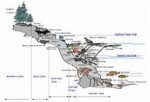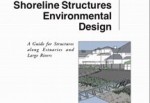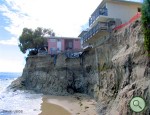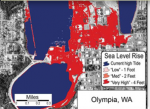BACKGROUND: A highlight of the sustainability theme is the potential to transmit to an audience a new way to look on and value the physical and living parts of a marine ecosystem which supplies a benefit directly or indirectly to humans. This is one area which provides potential for take away materials and ideas as well as action items.
Services Comments and Examples
- Provisioning
Food : production of fish,crustaceans, shellfish, edible marine algae, seabirds and seabird eggs,
Salt water: a storage and retention of water for industrial use
Oxygen production
Biomass : Macroalgae for energy conversion .
Biochemical: extraction of medicines and other materials from biota
Industrial products such as marine algal products.
Aggregate mining.
- Regulating
Climate regulation sink for greenhouse gases; influence local and regional temperature,
precipitation, and other climatic processes
Habitat for local and migratory birds.
Water regulation (hydrological flows)provides precipitation for groundwater recharge/
Water purification and waste treatment retention, recovery, and removal of excess nutrients and other pollutants
Retention of soils and sediments
Natural hazard regulation flood control, storm protection.
- Cultural
Vibrant Coastal Communities
Spiritual and inspirational source of inspiration; First Nations Cultures of the Pacific were nourished by the sea.
Recreational opportunities for tourism and recreational activities
Aesthetic many people find beauty or aesthetic value in aspects of marine ecosystems
Educational and research opportunities for formal and informal education and training
- Supporting
Sediment transfer, beach building.
Nutrient cycling storage, recycling, processing, and acquisition of nutrients
Transport of goods and services
Waste treatment and detoxification,.
Ocean Energy from Currents and Waves.
References:
1. From Marine Ecosystem Services :
From http://www.compassonline.org/” : Humans derive benefits (or ecosystem services) from ecological systems. These services are produced by plants, animals, microbes and people interacting with one another and the physical environment. Scientists recognize four categories of ecosystem services: provisioning services such as food, fuelwood, fiber, and water; regulating services such as the regulation of climate, floods, coastal erosion, drought and disease; cultural services including recreational, spiritual, religious and other nonmaterial benefits; and supporting services such as nutrient cycling and photosynthesis. Some key benefits provided by the ecosystem services of functioning marine systems include healthy seafood, clean beaches, stable fisheries, abundant wildlife, and vibrant coastal communities.
Value of biodiversity and ecosystem services
The supply of ecosystem services depends on many attributes of biodiversity. The variety, quantity, quality, dynamics and distribution of biodiversity that is required to enable ecosystems to function, and the supplying benefits to people, vary between services. The roles of biodiversity in the supply of ecosystem services can be categorized as provisioning, regulating, cultural and supporting, and biodiversity may play multiple roles in the supply of these types of services.
- For example, in agriculture, biodiversity is the basis for a provisioning service (food, fuel or fibre is the end product),
- a supporting service (such as micro-organisms cycling nutrients and soil formation),
- a regulatory service (such as through pollination), and potentially,
- a cultural service in terms of spiritual or aesthetic benefits, or cultural identity.
The contributions of biodiversity-dependent ecosystem services to national economies are substantial. The science of valuation of ecosystem services is new, and still developing basic conceptual and methodological rigour and agreement, but it has already been very instructive, since the value of such services is generally ignored or underestimated at decision and policy making levels. Identifying economic values of ecosystem services, together with the notions of intrinsic value and other factors, will assist significantly in future decisions relating to trade-offs in ecosystem management.
- Value of: Annual world fish catch – US$58 billion (provisioning service).
- Anti-cancer agents from marine organisms – up to US$1 billion/year (provisioning service).
- Global herbal medicine market – roughly US$43 billion in 2001 (provisioning service).
- Honeybees as pollinators for agriculture crops – US$2–8 billion/year (regulating service).
- Coral reefs for fisheries and tourism – US$30 billion/year (see Box 5.5) (cultural service).
- Cost of: Mangrove degradation in Pakistan – US$20 million in fishing losses, US$500 000 in timber losses, US$1.5 million in feed and pasture losses (regulating provisioning services). Newfoundland cod fishery collapse – US$2 billion and tens of thousands of jobs (provisioning service).
Of those ecosystem services that have been assessed, about 60 per cent are degraded or used unsustainably, including fisheries, waste treatment and detoxification, water purification, natural hazard protection, regulation of air quality, regulation of regional and local climate, and erosion control Most have been directly affected by an increase in demand for specific provisioning services, such as fisheries, wildmeat, water, timber, fibre and fuel. “
Aquatic ecosystems provide many services contributing to human well-being .Maintenance of the integrity and the restoration of these ecosystems are vital for services such as water replenishment and purification, flood and drought control.
1. Ecosystem Services : Benefits Supplied to Human Societies by Natural Ecosystems
http://www.ecosystemservices.org.uk/
2. Assessing the Non-Market Values of Ecosystem Services provided by Coastal and Marine Systems; http://www.eartheconomics.org/FileLibrary/file/Reports/Assessing_NonMarket_Values.pdf
3. Economic Valuation of Ecosystem Services
http://www.ecosystemvaluation.org/1-02.htm
- “It is most important to raise consciousness of the general public and of public officials and managers of the value of ecosystem services. Here are some ways that individual friends might choose.
1) Educate ourselves about ecosystem services.
2) Monitor local news for issues that impact ecosystem services to point out areas of public concern when ecosystem services are destroyed or disregarded.
3) Speak truth to power — communicate with local officials and congressional representatives about the implications of their decisions on ecosystem services.
4) Hold agencies to the environmental and public input requirements of the laws.
5) Make certain that preservation of ecosystem services is among the options presented.
6) Write letters to the editor to educate the public about ecosystem services”
4: Ecosystems and Human Wellbeing
http://www.who.int/globalchange/ecosystems/ecosys.pdf
5. Amory Lovins lecturing on Natural Capital in a lecture at Berkley8.
6. Ecosystem Services: The Role of Natural Capital
A assignment that defines the ecosystem services of Race Rocks
This page with curricular ideas is based on the original found at:
http://www.racerocks.ca/ecology/ecosystemservices/
Although it is targeted as an exercise for Race Rocks, It could be used similarly in any other ecosystem.
See below for a preview:
In recent years, we have started to acknowledge that “Ecosystem services ” are something to which we must start paying attention as to fail to do so leads to a rapid decline in our quality of life: This file explores that idea further and invites you to contribute to a new project :
DEFINING THE ECOSYSTEM SERVICES of RACE ROCKS.
It is our hope that while you are helping us to assemble the values of these Ecosystem services for Race Rocks, you may be motivated to look in your own back yard and start placing a more realistic value on your own Ecosystems’ Services. ” Even today’s technology and knowledge can reduce considerably the human impact on ecosystems. They are unlikely to be deployed fully, however, until ecosystem services cease to be perceived as free and limitless, and their full value is taken into account.”
OBJECTIVES: After doing this assignment,students will beableto:
1. Define what is meant by the terms ecosystem services.
2. Define what is meant by the term Natural Capital.
3. Enumerate the Ecosystem services of Race Rocks.
PROCEDURES:
1. Using the references below, investigate what is meant by Natural Capital and Ecosystem Services. Make a table where you can list the ecosystem services which you think are provided by an area like Race Rocks. In the table make a dollar estimation of the value of that service per year.
2. Using the area where you live, make a list of the ecosysterm services provided by your local ecosystems, and rate which you think are the most important.
Here are some ideas to get you started:
- You will observe commercial whale/marine mammal/bird/-watching boats in the area.. how many passengers do they carry and what is the value generated per trip.
- You may see tankers and others vessels going by which you can also record . Race Rocks has a lighthouse and foghorn.. What is the value to ships of this set of islands for navigation?
- Research is done at Race Rocks by students of schools, colleges and universities? What is the value of this location for research and education?
- An Integrated Energy System was developed at Race Rocks. What is the value of this to BC Parks, to the BC government, to Pearson College?
- A number of viewers around the world use Race Rocks as a location for bird and animal viewing. See the examples from England which are linked to the Daily Log
- The role of marine protected areas in conservation is a world wide goal. How does the Management Plan for Race Rocks reflect ecosystem services provided by the area. http://www.env.gov.bc.ca/bcparks/planning/mgmtplns/race_rocks/racerock.html
BACKGROUND REFERENCE: From:
http://www.oceansatlas.org/servlet/CDSServlet?status=ND0xOTAwMS4xO
TAwNiY2PWVuJjMzPWRvY3VtZW50cyYzNz1pbmZvUNEP – WCMC Ecosystem services‘Ecosystem goods’, such as food, and ‘services’, such as waste assimilation, represent the benefits humans obtain from a properly functioning ecosystem and are usually referred together as ‘ecosystem services’. Unsurprisingly a large number of ecosystem services have been identified, especially for the oceans which cover the majority of the planet and the coastal zone where the majority of humans live.The red high-lighted topics below might have a relevance for RaceRocks:These include: gas regulation (e.g. maintaining a balanced chemical composition in the atmosphere),
climate regulation (e.g. control of global temperature, precipitation, greenhouse gas regulation, cloud formation)
disturbance regulation (e.g. storm protection, flood control, drought recovery),
water regulation (e.g. regulation of global, regional and local scale hydrology through currents and tides),
water supply (e.g. storage of water returned to land as precipitation),
erosion and sediment transport/deposition (e.g. moving sediments from source areas and replenishing depositional areas),
nutrient cycling e.g. the storage, internal cycling, processing and acquisition of nutrients, nitrogen fixation, phosphorus cycles),
waste treatment (e.g. the breakdown of excess xenic and toxic compounds),
biological control (e.g. the trophic-dynamic regulation of populations),
refugia (e.g. feeding and nursery habitats for resident and transient populations of harvested species),
food production (e.g. the portion of gross primary production which is extracted as food for humans),
raw materials (e.g. the portion of gross primary production which is extracted as fuel or building material),
genetic resources (e.g. sources of unique biological materials for medicines),
recreation (e.g. opportunities for tourism, sport and other outdoor pastimes) and cultural (e.g. opportunities for aesthetic, artistic, educational, spiritual activities).The value (the theoretical cost of artificially replacing the services were they not to be provided by nature) to humanity of these ecosystem services has been estimated at $8400 billion per year for the open oceans and 1.5 times this for coastal ecosystems. Consumptive use (production of food and raw materials) is a minor (<5%) component and therefore the true value of marine ecosystems is in non- consumptive use. However quantifying such use is notoriously hard.Adapted from the reference:
The structure and function of ecological systems in relation to property right regimes. In: Hanna, S., Folke, C., Maler, K.G. (Eds.), Rights to Nature. Island Press, Washington, DC, pp. 13 34. Authority. Research Publication No. 35, Townsville, Australia, pp. 83. ( DOCUMENT ) Author(s) / Editor(s) Costanza, R., Folke, C., 1997.OTHER REFERENCES ON THIS TOPIC:
Patterns of a Conservation Economy: True Cost Pricing
http://www.conservationeconomy.net/natural_capital.htmlEcosystem Services:
http://www.conservationeconomy.net/ecosystem_services.htmlEcosystem Services: Benefits Supplied to Human Societies by Natural Ecosystems
http://www.ecology.org/biod/value/EcosystemServices.htmlMillennium Ecosystem Assessments of the world Health organization
http://www.millenniumassessment.org//en/index.aspxSecuring Canada’s Natural Capital:
http://nrt-trn.ca/biodiversity/securing-canadas-national-capital |
4.0 The Physical Story
Return to Index












